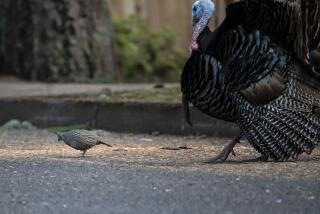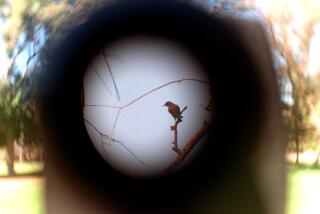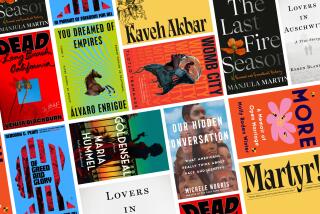Discoveries: ‘Help Me, Jacques Cousteau’
Help Me, Jacques Cousteau
Gil Adamson
Anansi/Toronto: 198 pp., $15.95
“In case we have to abandon ship, my mother has packed an emergency kit: Band-Aids, rubbing alcohol, scizzors, stomach remedies, a small mouldy package of cookies.... We are heading for the equator in a headlong rush.” “Help Me, Jacques Cousteau” was first published in 1997, 10 years before Gil Adamson’s second novel, “The Outlander,” but didn’t get the attention it deserves. Reminiscent of Alexandra Fuller’s “Don’t Let’s Go to the Dogs Tonight,” it is a novel up to its eyeballs in quirk. Hazel, our 8-year-old storyteller, notices everything: on the ship home from Australia, back home in Canada, during the summer in rich old Uncle Castor’s house. “I have my own unusual abilities, and can hear a conversation through three walls. After years of listening, I have formed an odd portrait of my parents.” Hazel’s grandfather keeps a dead dog. The day Hazel’s dad rewires the house she steps on a live wire; there’s the time grandfather ate a mastodon. The further apart Hazel’s parents get, the more stories she tells. Hazel is the best reminder a reader could have that it is possible not to get pulled down — to stay buoyant, love the daily details, keep your eyes wide open and let all those feelings just wash over you.
The Lost Girls
Three Friends, Four Continents, One Unconventional Detour Around the World
Jennifer Baggett, Holly C. Corbett and Amanda Pressner
Harper: 545 pp., $24.95
Three friends, all about to turn 28, decide to up and leave their fledgling media careers in New York City and take a yearlong trip around the world. Sixty thousand miles later, what do you know, New York is still there and Jennifer, Holly and Amanda have had the adventure of their lives. After traveling through Kenya, Australia, India, Southeast Asia, South America and New Zealand, all three have a new take on the things they thought they wanted. The thought of making decisions completely on their own looms: “Traveling through foreign countries had morphed us into one another’s accountants, counselors, organizers, nurses, and bodyguards. We’d also become slightly co-dependent.” As career goals and relationships shift with distance, all three realize that the best part of the whole venture is a lessening of pressure, the kind of pressure that can swallow a person when all perspective is lost. “We sort of assumed that the goal of the journey would be to get un-lost…. We thought the trip would instantly change our lives. We wanted to be found.” What did they learn? “That getting lost isn’t something to avoid, but to embrace. The only leaps of faith you’ll ever regret are the ones you don’t take.”
The Nesting Season
Cuckoos, Cuckolds and the Invention of Monogamy
Bernd Heinrich
Harvard University Press: 404 pp., $29.95
Years ago, Bernd Heinrich left the lab for the field and he’s never looked back. The author of 19 books (most famously, “Mind of the Raven”), Heinrich’s gorgeous books are full of patience. He watches, he waits, he thinks, much of it in his front yards, one in Maine, one in Vermont. He dips now and then into his vast reading and expertise in evolutionary biology. In this latest book, Heinrich writes about nesting — the plumage, the songs, the cooperation and lack thereof between males and females, parenting skills and division of labor, monogamy and survival. One of the delightful things about reading Heinrich is always his low-key allusions to human behavior. Some readers are happy to stay in the animal world — delighting in the efficiency and absurdity; others strain always toward comparisons with human behavior. “For most humans as for birds, love is not continuous nor does it last forever. What our culture would classify as ‘true’ love typically lasts for only eighteen to thirty months. After that we either part or remain friends and stay together out of habit and perhaps mutual ‘nest site fidelity,’ as do storks and albatross and some other birds.” He adds: “The lives of birds can better help us to understand ourselves. Recognizing that the diversity among birds and between humans and birds stems from common problems of parenting under the demands and constraints of diverse environments may be meaningful in understanding some of our own diversity.” Heinrich gives us a context larger than culture — the great wide world of biology, and it takes a lot of the pressure off, gives us perspective on our own behavior, a kind of nest, if you will, with a view.
Salter Reynolds is a writer in Los Angeles.
More to Read
The biggest entertainment stories
Get our big stories about Hollywood, film, television, music, arts, culture and more right in your inbox as soon as they publish.
You may occasionally receive promotional content from the Los Angeles Times.










